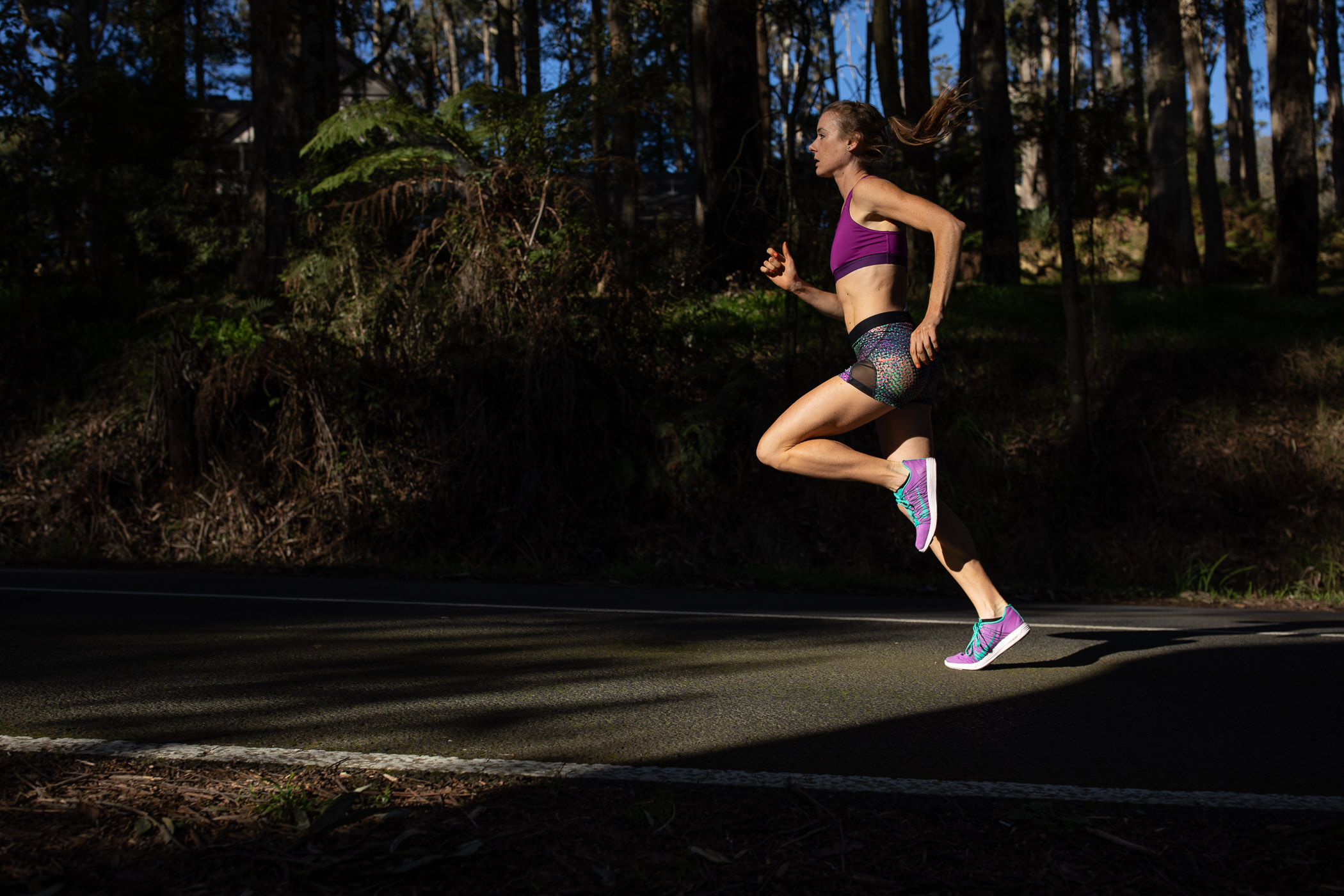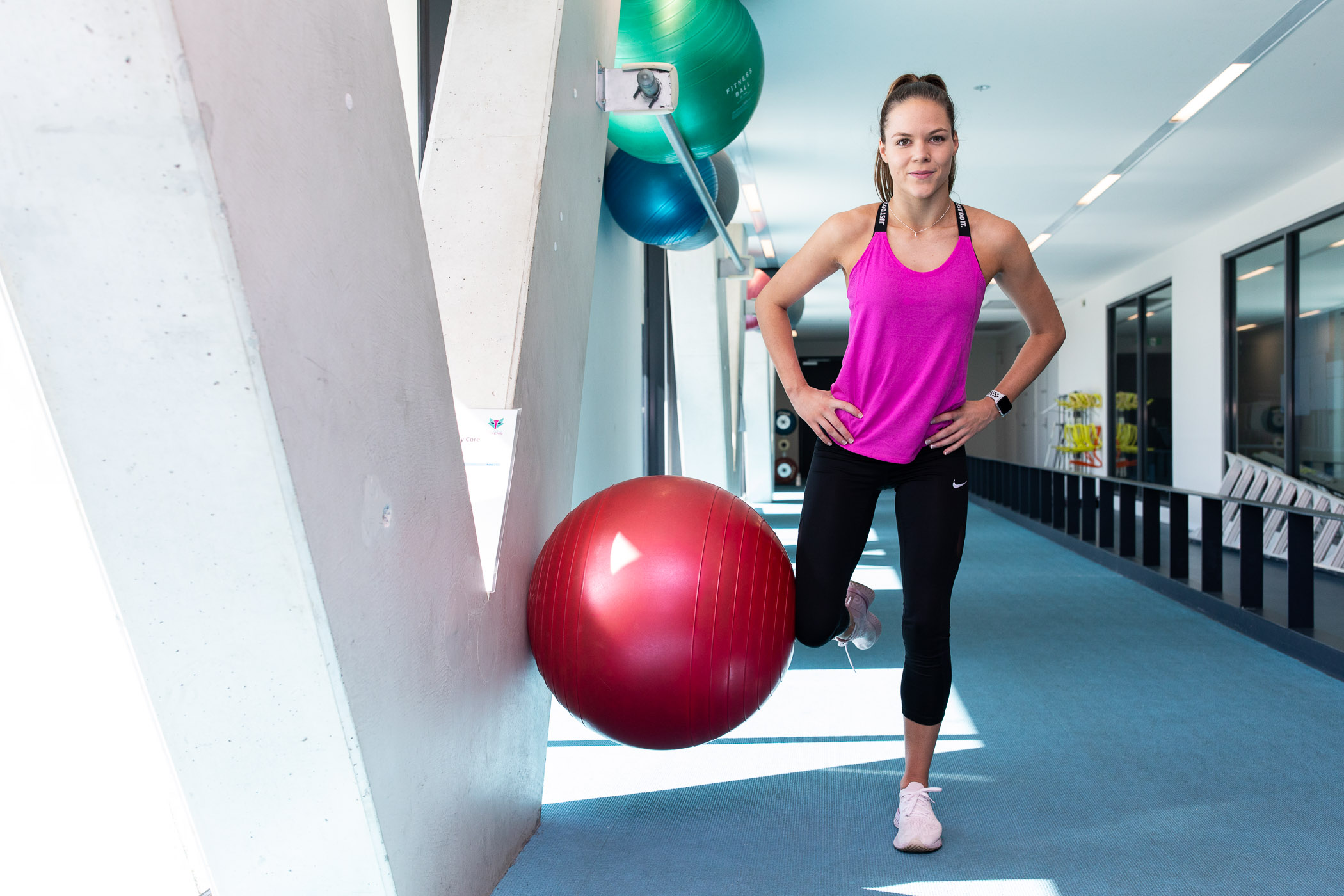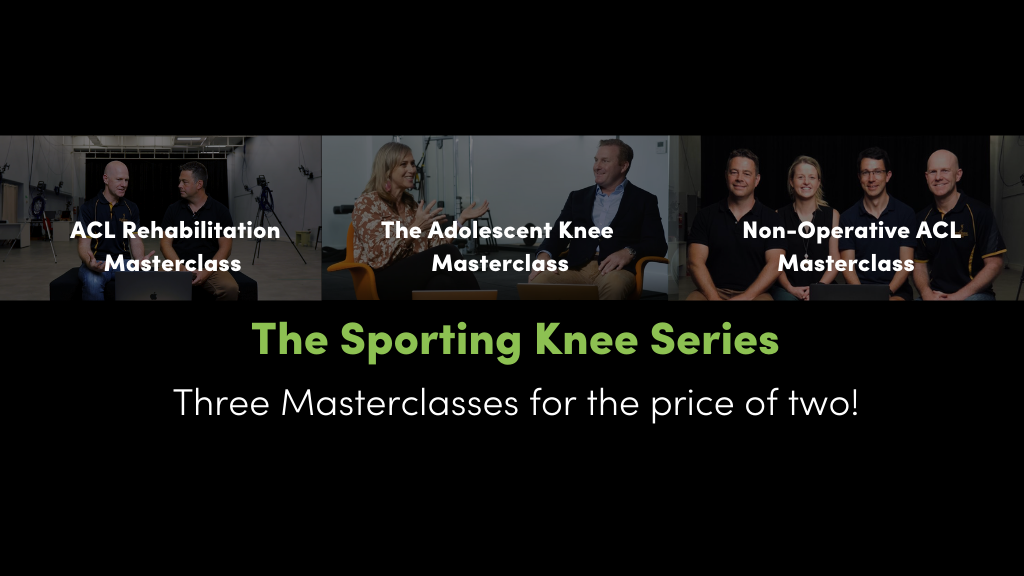In the latest edition of “Mick talks with…”, I sit down with physiotherapist and running injuries expert Tom Goom for a chat on knee pain in runners, specifically anterior knee pain/patellofemoral pain syndrome (PFPS).
For those that don’t know Tom, he is the Clinical Lead at The Physio Rooms in Brighton, UK and a specialist in the management of running injury. He has published research on tendinopathy and presents his Running Repairs Course in the UK, internationally and online. His website running-physio.com has gained a worldwide audience with over 6 million page views!
Like all my interviews, I walk away a better physio. And this one is no exception!
Mick: Thanks so much for your time Tom! Can you give our readers an idea of what PFPS is?
Tom: Absolutely. PFPS is one of the most common injuries we see in runners. And a simplified explanation of how it occurs is due to overload and irritation of the patellofemoral joint (where the kneecap meets the thigh bone).
Typically, what I see is that it comes on with an increase in training volume; so a classic history is the runner pushes their mileage, maybe they're training for an event like a marathon, and it's overworked that patellofemoral joint and it's starting to get irritated and sore.
But it is very much recognized as a multifactorial condition as well, so changes in training load in the runners will be a part of it, perhaps a big part of it for some. But there can be other factors as well, such as reduced strength around the hip and around the knee, poor neuromuscular control, particularly during single-leg loading tasks, and then certainly how the person runs (gait cycle) can also put more stress on the knee. And then of course we can’t forget about psychosocial factors contributing to the pain experience as well, so it’s important to understand that it's not just about tissues being loaded. That’s why we want to be a little bit careful we're not blaming structures too specifically.
Mick: Very good. Generally speaking, I don't see too many males with this type of condition. I know males are affected, I do see it occasionally, but I commonly see this issue with females. Are females more likely to have this condition? And if so, are there any potential reasons why?
Tom: That's a really good question. It is roughly twice as common in women than it is in men, so it does seem to have a higher incidence in females. And there's a few theories as to why, but there isn't a huge amount of prospective research in runners to give us a very clear answer.
A couple of the things that come up would be that we might see increased hip ADDuction during the loading phase of running in women, and that increased hip adduction is thought to increase the stress on the patellofemoral joint. So that very well may be a contributing factor, and gait-retraining can help this.
Mick: Very interesting! I often tell my patients to “run softer”; is that what we’re talking about here (gait re-training)?
Tom: Kind of. It has been shown that a reduction in lower limb running injuries occur when asking people to run “softly”. But, there's a downside to it. Quite a few people run softly by switching to the forefoot, which increases calf and Achilles load.
If we’re going to give gait re-training advice to “run softly”, we just have to be careful not to overload some other part of the body and they’re coming back to see us, not for knee pain, but with a very sore Achilles!
Mick: Excellent point! So if we’re going to change someone’s running pattern we need to be prepared to then also throw at them some calf training, and maybe low level plyometrics to mitigate the risk of another type of lower limb injury?
Tom: Absolutely. It's weighing up the options for the individual in front of you, and the research in this area is growing! Another paper, a very small study to be fair (LINK to paper), looked at three different methods of reducing patellofemoral load through gait retraining; One was switching to forefoot, one was increasing forward trunk lean, and the other was increasing step rate by 10%. And they found that each option was capable of reducing symptoms in the knee.
So it certainly is just weighing up what we think is the best option for each individual. And to my mind, the lowest risk option is quite often an increase in step rate, because it doesn't increase the load on the calf and the Achilles. And being a low risk character, I like the idea of adopting the low-risk option, so I'm not going to be concerned about that person's calf or Achilles.

Mick: That's very sensible Tom! We talked a little bit so far about some treatment options; strengthening and gait-retraining. Are there any others?
Tom: I think the most important one is activity modification. I think that really is absolutely key. What we're looking to do here is try to bring whatever their goal activity is, and obviously in our running population, it's their running, down to a level that they can manage. And in particular, running that doesn't cause lasting irritation of symptoms. Without activity modification, it's quite hard to manage patellofemoral pain in running, because you might be trying to strengthen, you might be trying to change gait, but the knee can stay quite irritable if people continually overload and irritate their knee.
And there is evidence to support activity modification. Esculier did a really fantastic paper in 2017 (LINK to paper) in runners, and they looked at three groups who all had activity modification and education about bringing the running down to a manageable level that didn't cause lasting irritation. All three groups received this advice, with the difference being that one group also had gait re-education, and one group also had strength work for the quads and the glutes.
Now you might expect that those that did the strengthening work on top of the activity modification, or those that changed their gait on top of activity modification, did better. They didn’t. All three groups improved the same in that study. Which led the authors to conclude that it's the activity modification that seems to be the key thing to improve symptoms and function.
In summary, activity modification should be considered first. And then yes, bring in strength work to address their needs. Have a look at their gait, and then ask that question: is there anything in their running pattern that puts more stress on this patellofemoral joint and can we change that? And if there is, great. If there isn't, we may not choose to change it.
Mick: Excellent. What about orthotics or taping?
Tom: I think there is evidence for orthotics. My understanding is it's likely to be effective in those with an increase in foot mobility. So, you might try that as a way of altering the load through the lower limb to reduce pain. Importantly, we’re not trying to correct an “abnormal movement” or “abnormal foot posture” necessarily. We're not saying, “This movement isn't correct, therefore we need an orthosis to change it,” but rather we’re trying to alter the load distribution.
There is also some evidence for taping. But my preference is to look for more active solutions, more long-term solutions, so I've moved away from taping in the last two or three years. Maybe it comes in handy if you've got a runner that's got an event at the weekend and you need something to try and create short-term reduction in symptoms. But I find activity modification, education, progressive strength work, are very effective in runners. As a result, I don't often find I need to go down the orthosis or taping route really.
Mick: Very sensible, and I agree too. You have eluded a little bit to this question already, but strengthening or stretching for anterior knee pain? or potentially both? And if we're going to strengthen, what muscles should we focus on? Or if we're going to stretch, what muscles should we focus on?
Tom: Great question. I much prefer strengthening over stretching for patellofemoral pain. If you think about static stretching, the evidence would suggest it has quite short-term effects, in terms of change of range of movement. And I think with runners, if they're struggling to manage the forces involved in running, it's making them stronger that's likely to help, rather than lots and lots of static stretches. So over the two, I'd prefer the strength work really.
Then if you look at when muscles are active in the running gait cycle, during load absorption where patellofemoral load is at its highest, there's lots of activity from the quads, the glutes, and the calf muscles to help manage that load. So those are the three key muscles I would aim to try and strengthen.
In regards to prioritising these three muscles for strengthening, for me clinically, I quite like the idea of working down the leg. So, strengthen at the hip, because it's been found to reduce pain at the knee. Then strengthen around the knee, particularly the quads. Then hopefully because you've reduced irritability by strengthening at the hip, that they're more tolerant of loading at the knee to strengthen the quads, you may not need to worry about the calf too much. But if you have assessed them and you still feel that they have deficits lower down to the calf, you'd work down the leg and address the calf.
I also think it's very important that PFPS patients address their lower limb control too; especially the ones that struggle with single-leg loading, like single-leg squat. Don’t just focus on pure strength. Have a good look at the basic movement foundations of single-leg balance, single-leg squat, step down, lunge, and actually look at the control aspect of that as well as the strength.
And then don’t forget power. We know there's power deficits in patellofemoral pain too. Particularly around the hip. So at the end stage, when we've got the strength, and you've got the control, then maybe bring in some plyometric work, or some more speed-based strength work, to develop the power.

Mick: Wonderful advice Tom. What’s your thoughts on load management, and does it play a role? If so, what are some simple strategies physios and patients could use to manage load?
Tom: Absolutely, as we've said, load management and activity modification activity are key, particularly in our runners. And what I would say here about working in a running clinic that looks after and treats a lot of runners; how do we deal with this practically? Well, it's about the subjective assessment and asking them, “How does their pain behave when they're running? How does it behave after they've run?” And exploring with them, and seeing if you can find a baseline level of running that has minimal pain during their run. We usually say up to a 3/10 pain during the run, but without a lasting reaction afterwards that settles within 24 hours is an appropriate place to be running when someone has symptoms. It’s actually very similar to our approach with tendinopathy.
A patient may say, “Well I can run 4 miles, and it's a little bit sore at the end. But I stop, I cool down, I grab a shower and it's fine. But if I push that to 5 miles, it's actually really quite sore in that fifth mile. And now actually I'm noticing my knee pain going up and down the stairs the next day.”
For me, that information tells me there's lasting irritation at 5 miles, so let's base your training around 4 miles, and let's keep your longest run at 4 miles for the moment. We might have 3 runs that week; one at 4 and a couple at 3 miles. But all along we have the plan that we're going to progress the running distance over time. Overall, it’s important to find out what's manageable at the moment; where the patient wants to be, and then gradually build up towards it.
There has been some talk about the “10% rule”, and it's fair to say there's virtually no evidence to support the 10% rule. There was a big review done at the end of 2018 (LINK to paper) that just highlighted the lack of evidence for it. It does have its uses, though. It's useful because it's simple and it's a clear message we can give to patients to say, “Okay, let's find what you can manage, and let's add roughly 10% per week”.
But I think we have to be careful it doesn't become a rigid rule. Because if you're not doing very much at all; if you're only doing 2 or 3 minutes of running, and you add 10% a week, it'll take you forever to get anywhere! Likewise, at the other end of the spectrum, and we see some top-level athletes doing 180 miles a week in some cases; you can't just tack another 10% on top of that.
I would say overall that the “10% rule” is nice, but it’s a ballpark figure. It's much more important about knowing your patient, and what they can manage, rather than any specific recipe.
Mick: Very good. What about sounds that come from the knee when a person runs? Is this something that they should worry about?
Tom: Generally, no. I think quite a few people will have noisy knees. Claire Robertson's done some fantastic research on this suggesting about 90% of people will have clicky knees or various noises from the knees. I'm not concerned about that and I'll often say to the patient that it's a normal finding. It may be something that doesn't change either. Quite often it stays there even at the end of the rehab process, but it doesn't mean there's anything wrong. In fact it may be a feature of healthy knees, it may just be fluid moving over the joint surface, which is a good thing.
Mick: Excellent Tom! Last one mate. If you had a patient looking to start running, what kind of advice would you give them in regards to injury prevention?
Tom: Good question. I think like all aspects of what we do, we'd want to try and tailor it to the individual. Get to know them, and see what risk factors they have as an individual here. For example, we know that previous injury is a risk factor for future injury in runners. We help them address that previous injury if it's still an issue and we can address the impairments related to it.
Other factors I would consider are that; we know novice runners are slightly higher risk of injury than more experienced runners. We also know that those with high BMI may do better starting with a smaller weekly distance because they have slightly elevated injury risk.
It’s also important that we help them understand load management and actually plan a gradual increase in their running. There are programs that can do that like Couch to 5K which takes you to 5k running distance over about nine weeks. You could perhaps encourage them to have a look at something like that, but recognize they may need to adapt it. If they're struggling with pain or fatigue, they might need to have recovery week or to take it down a notch. Gradually building up is a really key message!
I think recognizing the benefits of recovery is an overlooked component to injury prevention and rehabilitation. It isn't just about doing as much as you can all the time. It's about gradually progressing and also having recovery days/weeks in there for your body to adjust. And don’t forget plenty of sleep, hydration and good nutrition too. Finally, I think strength work would be the other thing to throw into the mix too.
In summary, gradually progress running distances and training, make sure that they have good recovery practices and ensuring regular strengthening. Do all these things and everyone will sleep well at night!
Mick: Very good Tom. I really appreciate all your time and expertise on helping me and our readers understand PFPS a lot better!

Continue building on your knowledge by taking advantage of our bundle series "The Sporting Knee Series"
From young children all the way to athletic older adults, our team of expert clinicians will help develop your skills in the assessment, treatment and management of ACL injury and other common pediatric injuries
$199 USD
